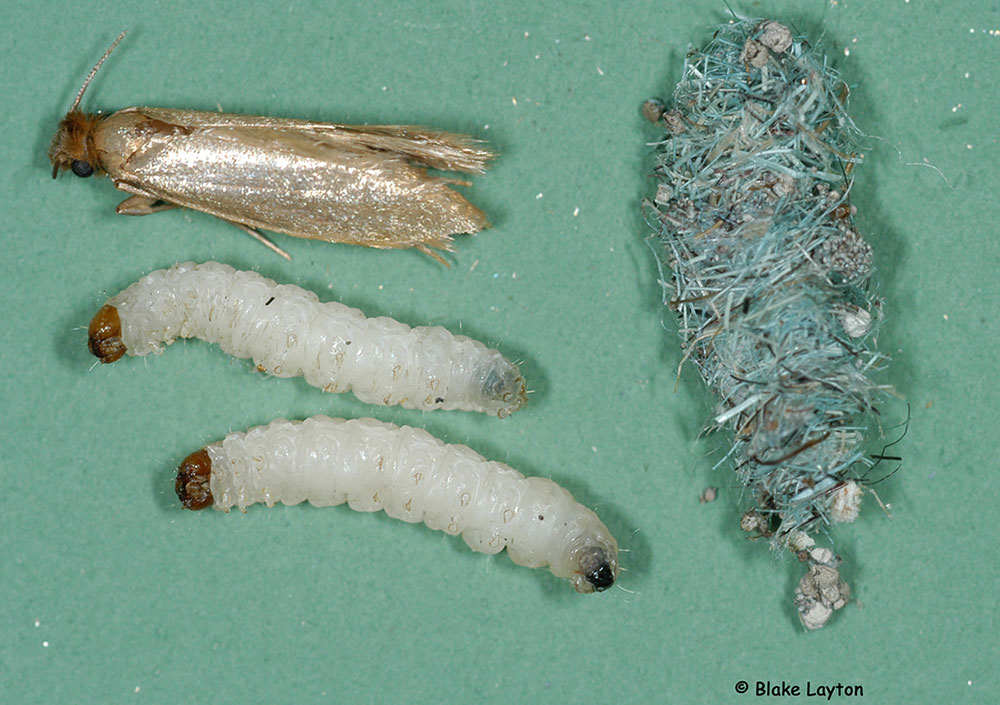Webbing Clothes Moth, Vol. 2, No. 3

Tineola bisselliella
Order: Lepidoptera
Family: Tineidae
Clothes moths can cause serious damage to expensive articles of clothing, especially if those articles are not stored properly during the off-season. Clothes moths rarely damage articles made of cotton or synthetic fabrics, but items made of wool, silk, fur, or any other “animal origin” fabrics are susceptible, and items that are soiled with sweat, dandruff, and other stains are especially attractive to egg-laying moths. It is not the adult moths that cause the damage; they do not even have functional mouthparts, but it only takes a single caterpillar feeding on an expensive suit or fur to cause significant damage, and each female moth produces approximately 40 to 50 eggs. The caterpillars, which are approximately 1/3 inch long when mature (see photo), often concentrate their feeding along seams or heavily soiled areas of fabric. In nature, clothes moths feed on hides of dead animals, accumulations of animal hair, bird nests, and wasp nests, and similar items.
With spring rapidly approaching, now is the ideal time think about storing winter clothes for the summer. Sort through your wardrobe and identify clothing articles that are susceptible to clothes moths. Have susceptible clothing cleaned before placing into summer storage to kill any life stages of clothes moths or carpet beetles that are already present and to make the item less attractive to egg-laying moths. Keeping the article in the protective wrapping in which it is returned from the cleaner will provide additional protection. Additional steps should be taken when storing expensive furs and similar items. Sweaters and similar items can be dry cleaned and stored in air-tight/bug-tight containers, and moth balls (paradichlorobenzene) can be added if desired to provide additional protection (read label carefully before using).
See pages 20-23 of Extension Publication 2443, Control Household Insect Pests, for more information on clothes moths and carpet beetles and how to protect your clothing from these bothersome pests.
Let others know about the Bug’s Eye View Newsletter: If you know someone who might enjoy receiving the Bug’s Eye View Newsletter, please share. They can easily subscribe by clicking on the sign up link shown below.
Blake Layton, Extension Entomology Specialist, Mississippi State University Extension Service.
The information given here is for educational purposes only. Always read and follow current label directions. Specific commercial products are mentioned as examples only and reference to specific products or trade names is made with the understanding that no discrimination is intended to other products that may also be suitable and appropriately labeled.

